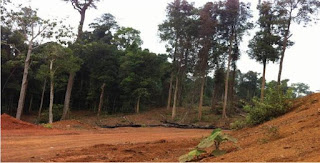
Exploring Manganese Mining Opportunities in Timur Leste and Indonesia.
Manganese is a critical mineral that plays an essential role in various industries, particularly in steel production and battery manufacturing. With the increasing global demand for manganese, particularly in the form of electrolytic manganese dioxide used in dry cell batteries, the mining sector in regions like Timur Leste and Indonesia presents significant opportunities. In this blog post, we will explore the manganese ore areas available for mining in Timur Leste and Indonesia, the challenges faced, and the broader significance of manganese in industrial applications.



Prepare for 20 feet Container.
The Importance of Manganese Phosphate in Rust and Corrosion Prevention for Steel
In today's industrial landscape, the battle against rust and corrosion is an ongoing challenge for manufacturers and engineers alike. Among the various strategies employed to enhance the longevity of steel, manganese phosphate treatment has emerged as a highly effective solution. Manganese, a metal often overlooked in its significance, plays a crucial role in steel production and protection. This blog post will explore the utility of manganese phosphate in preventing rust and corrosion on steel surfaces, emphasizing the importance of manganese as an alloying agent in the steel industry.
Manganese phosphate is a chemical compound that serves as a protective coating for steel. Its application creates a thin layer on metal surfaces that inhibits corrosion, making it an invaluable resource in various industrial applications. The process involves phosphating, where steel is immersed in a solution containing manganese ions, leading to the formation of a robust phosphate layer that enhances surface hardness and wear resistance. This treatment is particularly beneficial in environments exposed to moisture and corrosive elements.
Manganese is the fourth most consumed metal globally, trailing behind iron, aluminum, and copper. Approximately 80% of all manganese produced annually is utilized as an alloying agent in steel manufacturing. Its primary function is to improve the strength, toughness, and hardenability of steel. Additionally, manganese plays a significant role when combined with other metals, especially in stainless steel production.
By enhancing these essential properties, manganese contributes to the overall performance and durability of various steel products. The significance of manganese extends beyond its basic properties; it also aids in preventing embrittlement during steel production processes. This quality is particularly important for industries relying on high-performance steels that must withstand extreme conditions without succumbing to rust or corrosion.
The Surge in Manganese Ore Production: A 2024 Overview
The Surge in Manganese Ore Production: A 2024 Overview
As the global demand for manganese ore continues to rise, 2024 has marked a significant turning point for the industry. With a remarkable 50% increase in total output from major manganese mines compared to 2023, stakeholders are keenly observing the dynamics of this crucial mineral. This blog post delves into the details of manganese production, highlighting key site locations, stockpile strategies, and the implications for the future.
Unwashed Manganese Ore: Efficient Handling and Washing Solutions
Manganese ore is a crucial component in various industrial processes, particularly in steel production and battery manufacturing. However, the ore must often undergo washing to remove impurities and enhance its quality before it can be effectively utilized. In this blog post, we will delve into the importance of managing unwashed manganese ore dumps and explore the structure and conveying systems that facilitate the efficient transfer of ore for washing.
Understanding Unwashed Manganese Ore Dumps
Unwashed manganese ore refers to raw material that has not yet undergone the washing process to eliminate contaminants. These dumps can accumulate significant quantities of manganese ore, which may contain various impurities such as silica, iron, and phosphorus. Proper management of these unwashed dumps is essential to ensure that the subsequent washing processes yield high-quality ore suitable for industrial use.
The challenges associated with unwashed manganese ore include environmental concerns, inefficient handling, and potential economic losses due to low-grade materials. Therefore, implementing effective strategies for managing these dumps is critical for maximizing resource recovery and minimizing waste.
The integration of conveyor systems into the logistics chain for loading manganese ore represents a significant advancement in how we manage raw materials for steel production. As global demand continues to rise, particularly from powerhouse markets like China, investing in efficient transportation solutions will be crucial for suppliers aiming to meet market needs without compromising on quality or sustainability.
As you reflect on the critical role that manganese ore plays in our modern economy, consider how innovations in transportation technology can pave the way for a more efficient future in steel production.














